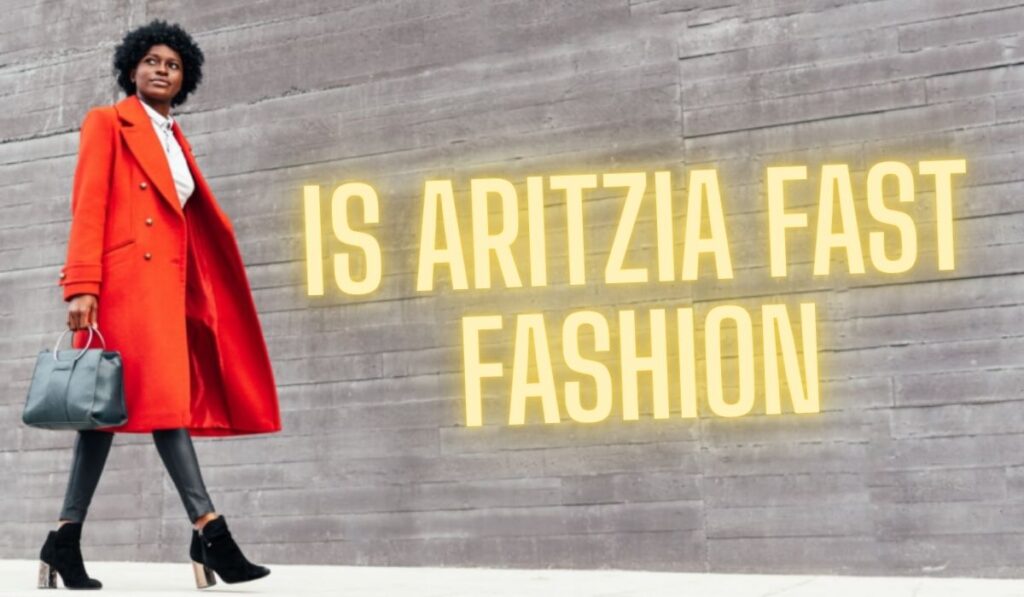Introduction
If you’ve ever walked into a mall or browsed online fashion retailers, chances are you’ve come across Aritzia—the Canadian clothing giant known for its chic, modern, and minimalistic designs. But a question that often arises among conscious shoppers is: is Aritzia fast fashion?
At first glance, Aritzia doesn’t scream “fast fashion” the way brands like Shein, Zara, or H&M do. The price points are higher, the marketing is more refined, and the stores feel elevated compared to budget-friendly chains. Still, the line between fast fashion and premium fashion can sometimes be blurry. Let’s break down what fast fashion really means, how Aritzia operates, and whether the brand fits into that category.
What Does Fast Fashion Really Mean?
To answer whether Aritzia is fast fashion, we need to first define the term. Fast fashion refers to the rapid production of cheap, trend-driven clothing designed to move quickly from runway to retail shelves. Key characteristics include:
- Low prices that encourage mass consumption.
- Quick turnover—new collections arrive almost weekly.
- Lower quality, with garments that may only last a season.
- Significant environmental and ethical concerns, including waste and labor exploitation.
Brands like Forever 21, Shein, and Primark embody fast fashion, producing clothing at lightning speed for a fraction of the cost.
So where does Aritzia land on this spectrum?
Aritzia’s Brand Positioning
Founded in 1984 in Vancouver, Aritzia built its reputation as a “everyday luxury” retailer rather than a budget chain. It owns several in-house labels—like Wilfred, Babaton, and TNA—that give it flexibility in design and production.
Unlike traditional fast fashion brands, Aritzia leans toward:
- Higher price points (for example, $150+ for a coat, $90 for a blouse).
- Quality-focused marketing, often emphasizing craftsmanship and long-lasting wear.
- Minimalist, timeless designs, instead of fleeting fads.
This branding has allowed Aritzia to carve out a space in the premium fashion market, appealing to millennials and Gen Z who want elevated everyday wear.
Is Aritzia Fast Fashion? Breaking Down the Evidence
1. Pricing and Perception
Aritzia’s prices are noticeably higher than traditional fast fashion brands. For example, a dress at Shein might cost $20, while at Aritzia it could be $120. This difference in pricing suggests that Aritzia is aiming for durability rather than disposability. However, affordability varies by shopper, and some argue that “premium fast fashion” still counts as fast fashion if trends change quickly.
2. Production Speed
A key marker of fast fashion is how quickly collections rotate. Aritzia does release new collections seasonally and occasionally follows trends, but it doesn’t flood stores with weekly “micro-collections” like Zara. This slower turnover indicates a step away from the traditional fast fashion cycle.
3. Quality and Longevity
Customer reviews often highlight the quality of Aritzia’s materials compared to cheaper alternatives. Fabrics like wool, silk, and organic cotton are staples in their lines. While some pieces (like polyester-based items) still raise concerns, overall the brand promotes longer-lasting wear than typical fast fashion.
4. Sustainability and Ethics
Here’s where the debate intensifies. Aritzia markets itself as a responsible brand, releasing sustainability reports and highlighting eco-friendly practices. For instance, they’ve pledged to use 100% renewable energy in operations by 2030 and aim to reduce emissions significantly.
Still, critics point out that Aritzia’s supply chain transparency is limited compared to fully sustainable brands like Patagonia or Reformation. Without clear disclosures about factory conditions and labor practices, some argue that Aritzia is closer to “slow fast fashion”—a brand that sells aspirational clothing but still participates in mass production.
Comparisons: Aritzia vs. Fast Fashion Giants
To better understand, let’s compare Aritzia with recognized fast fashion players:
| Feature | Aritzia | Zara/H&M | Shein |
|---|---|---|---|
| Price Range | Mid-to-high | Low-to-mid | Ultra-low |
| Collection Turnover | Seasonal | Weekly | Daily |
| Materials | Mixed (higher quality fabrics in some lines) | Mostly synthetic | Mostly synthetic |
| Sustainability Efforts | Some initiatives, limited transparency | Basic CSR programs | Minimal |
| Target Audience | Premium shoppers, everyday luxury | Mass-market | Ultra-low budget shoppers |
This shows that while Aritzia does share some traits with fast fashion (mass production, trend-based designs), it positions itself closer to premium fashion retailers like Theory, Reiss, or Club Monaco rather than ultra-fast-fashion chains.
Consumer Perception: Why People Ask “Is Aritzia Fast Fashion?”
The question isn’t just about price or quality—it’s about image. Aritzia feels more polished than H&M, but less sustainable than brands known for their eco-consciousness. Shoppers are increasingly aware of the impact of their clothing choices, and Aritzia’s popularity among influencers and young professionals often sparks curiosity: is this stylish brand really ethical, or just another well-marketed version of fast fashion?
This tension reflects a larger shift in the fashion industry. Consumers want affordable luxury without the guilt of supporting exploitative systems—but finding that balance is complicated.
The Gray Area: Premium Fast Fashion
Some fashion experts argue that Aritzia falls into the category of “premium fast fashion.” These are brands that market quality and exclusivity but still rely on mass production and global supply chains. They don’t churn out clothes at Shein’s speed, but they’re not fully transparent sustainable brands either.
Aritzia thrives in this gray space—appealing to shoppers who want quality and style but aren’t ready (or able) to spend on true luxury.
Conclusion
So, is Aritzia fast fashion? The answer is nuanced. Compared to ultra-fast-fashion giants like Shein or H&M, Aritzia operates at a slower pace, with higher quality materials and more premium branding. However, it is still a large-scale retailer producing mass quantities of clothing, which places it somewhere between fast fashion and premium retail.
If sustainability and ethics are your top priorities, Aritzia may not fully meet your standards. But if you’re seeking well-made, stylish pieces that last longer than a single season, it offers a better alternative than traditional fast fashion chains.
In the end, the label “fast fashion” is evolving, and brands like Aritzia highlight just how complex the modern fashion landscape has become.
FAQs: Is Aritzia Fast Fashion?
1. Is Aritzia considered fast fashion?
Not in the traditional sense. While Aritzia mass-produces clothing, it operates at a slower pace and higher price point compared to ultra-fast-fashion brands like Shein.
2. Why do people ask if Aritzia is fast fashion?
Because it’s trendy, widely available, and mass-produced, some shoppers lump it with fast fashion. However, its quality and pricing set it apart as “premium fast fashion.”
3. Does Aritzia use sustainable practices?
Aritzia has introduced some sustainability initiatives, such as reducing carbon emissions and using more eco-friendly materials. But transparency in supply chains and labor practices remains limited.
4. How does Aritzia compare to Zara or H&M?
Aritzia offers higher quality, slower turnover, and elevated branding compared to Zara or H&M. It is less about disposable fashion and more about long-term wear.
5. Are Aritzia clothes worth the price?
Many customers believe so, citing quality fabrics and timeless designs. While not luxury, Aritzia clothes tend to last longer than fast fashion alternatives.
6. Can Aritzia be called sustainable fashion?
Not entirely. While it’s better than ultra-fast fashion, it doesn’t yet meet the standards of fully sustainable brands like Patagonia or Reformation.
7. What is the best way to shop Aritzia responsibly?
Focus on timeless pieces you’ll wear for years rather than chasing trends. Buying fewer, high-quality items ensures you get value while reducing waste.

